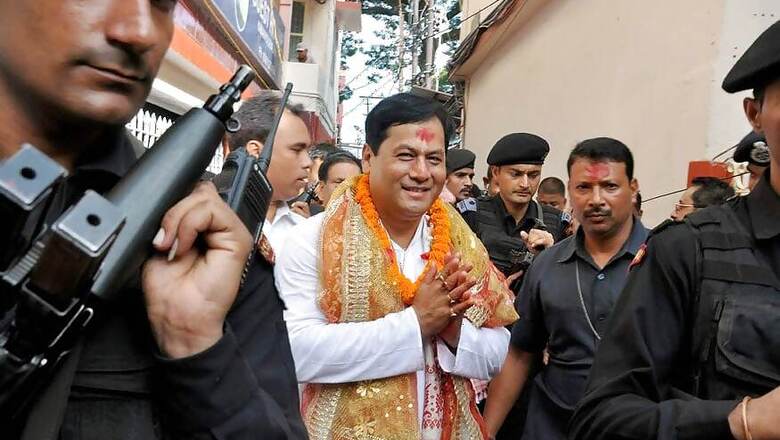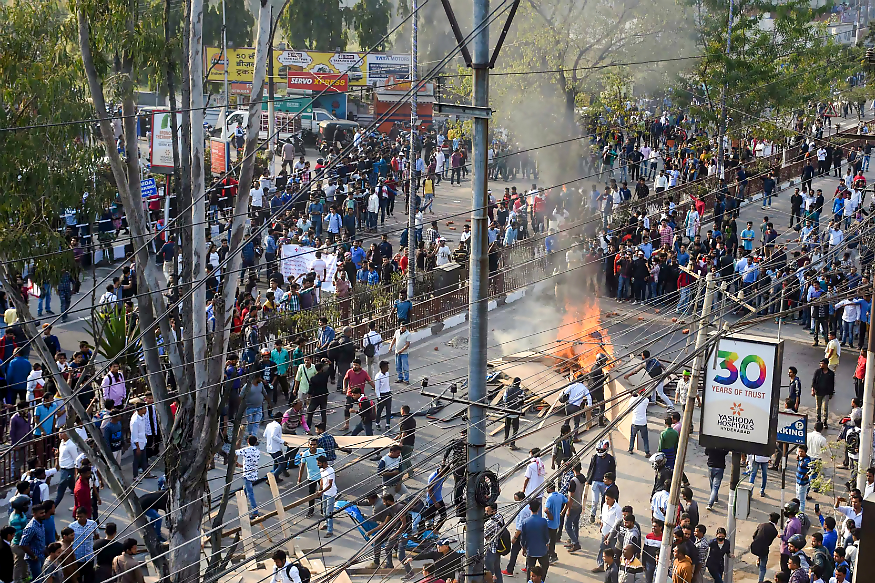
views
When ‘jatiya nayak’ (an affectionate title, meaning leader of the community) Sarbananda Sonowal became the chief minister of Assam, many of his compatriots thought that his first step would be to take strong action against the influx of immigrants and safeguard the rights of ‘indigenous people’.
But as he gets ready to defend his chair in 2021, Sonowal is being accused of siding with those who are allegedly diluting the rights of original inhabitants of the state. So where does the Citizenship (Amendment) Act leave Sonowal, a man whose entire politics has been around the issue of illegal migrants allegedly entering Assam from Bangladesh?
Elections in Assam have always been fought on the issue of identity. In the state which has only about a 48 per cent Assamese-speaking population, as per the last census, the fear of the ‘majority losing ground to the alleged illegal immigrant’ has dominated public discourse. From 1979 to 1985, the Assam movement peaked with over 860 people dying in the agitation. In 1985, the Assam Accord was signed, which safeguarded the rights of the indigenous people. Since then, every election had the same leitmotif: the implementation of the Accord in letter and spirit.
In the 2011 assembly elections, the then two-time chief minister of the state, Tarun Gogoi, was the great Ahom general who wanted to prevent Assam from being taken over by Badruddin Ajmal’s All India United Democratic Front (AIUDF), a party branded as ‘pro-immigrant’.
In 2016, the game changed. Riding on the Narendra Modi wave which had installed a Bharatiya Janata Party-led government at the Centre two years earlier, the saffron outfit’s chief ministerial face Sonowal told this reporter, “Our main objective is to defeat the Congress-AIUDF nexus. They are a dangerous team which is trying to handover the land of Assam to the illegal migrants.”
In Sonowal, BJP found the poster boy it needed to win the first election in the Northeast. Former president of the all-powerful All Assam Students’ Union (AASU), Sonowal was awarded the title of ‘jatiya nayak’ by AASU and other civil rights organisations after the Supreme Court scrapped the Illegal Migrants (Determination by Tribunal) Act, 1983 based on a petition.
The Act was said to be in favour of ‘illegal Bangladeshi migrants’, as the onus of proving their citizenship was on the complainants, instead of those under the scanner. For Sonowal, this was also a great political win, as the-then Tarun Gogoi- led Congress government was in favour of continuance of the IMDT Act.
On the back of a strong anti-migrant campaign, AASU poster boy Sarbananda Sonowal became the first BJP chief minister of Assam. But he was not alone in this win. Another key strategist of this victory was former Congress leader Himanta Biswa Sarma. Many argued that while Sonowal was the perfect face of the campaign, it required Himanta’s machinations to turn the election around for the BJP.
Since then, the uneasy calm between the two came to define BJP’s Assam unit. While Sonowal held on to his chair, Himanta’s stock rose in the party after he helped the BJP make the Northeast ‘Congress mukt’.
And this delicate balance may see another push, shove or a nudge yet again. The state is tense and Army had to be called in after protesters turned violent across the region. Those on the streets say that the old fault lines have opened again after the Citizenship (Amendment) Bill became an Act of Parliament.

Protesters burn hoardings during a protest against the new citizenship law Act in Guwahati on December 11, 2019. (PTI Photo)
What does it mean for Sarbananda and Himanta? While Himanta is seen as a multidimensional politician, Sonowal’s popularity has been primarily based on one plank: his opposition to alleged illegal migrants.
After the ratification of the Citizenship (Amendment) Act, which will allow Bangladeshi Hindus who came to Assam till December 31, 2014 get citizenship, Sonowal’s entire political capital is at stake. Himanta is a leader who has following in both the Assamese-dominated Brahmaputra valley and the Bengali-dominated Barak valley. But Sonowal’s main political base is upper Assam, the area which has become the hotbed of protests against CAA.
Opposition leaders have come down heavily on him, with veteran Tarun Gogoi on one hand calling him a ‘fake jaitiya nayak’ and on the other saying he is free to join the Congress if he wants to protest against the Act. Even AASU, the organisation which he led for seven years, called out his silence when the bill was being discussed in Parliament.
The organisation’s general secretary Lurinjyoti Gogoi told the local media that “while the chief ministers of neighbouring states like Meghalaya and Nagaland, have opposed the bill though these states enjoy special status, the Assam chief minister has remained silent”.
All the seven north-eastern states were strongly against CAA. But Nagaland, Mizoram, Arunachal Pradesh, most parts of Meghalaya and even Manipur got protection, while Assam hardly got any cover. Thus, Sonowal has the dubious distinction of being the only chief minister from the Northeast who has failed to secure his state from CAA. (While his counterpart in Tripura is facing protest, the numerical strength lies with the Bengali community)
Though he has been vocal enough about his Assam Agitation roots and that he will not let the indigenous people down in this battle, he has certainly lost a lot of ground – from 2005 when he was made the ‘jatiya nayak’ to 2019 where he is being accused of a ‘helpless silence’ as his party passed the CAA in Parliament.
This couldn’t have come at a worse moment for him, as his standing as a leader of the region is almost dwarfed by his rival in the party, Himanta Biswa Sarma. While his role is limited to that of state chief minister, Himanta has delivered the entire Northeast to the party.
With elections just a year and a half away, amid his growing isolation within the party, political observers feel Sonowal might need to do something drastic to remain relevant in the state. But then, there is also the other voice, which says at least he was in Assam during the protests, unlike Himanta, who when the state was burning had stayed put in New Delhi.

















Comments
0 comment